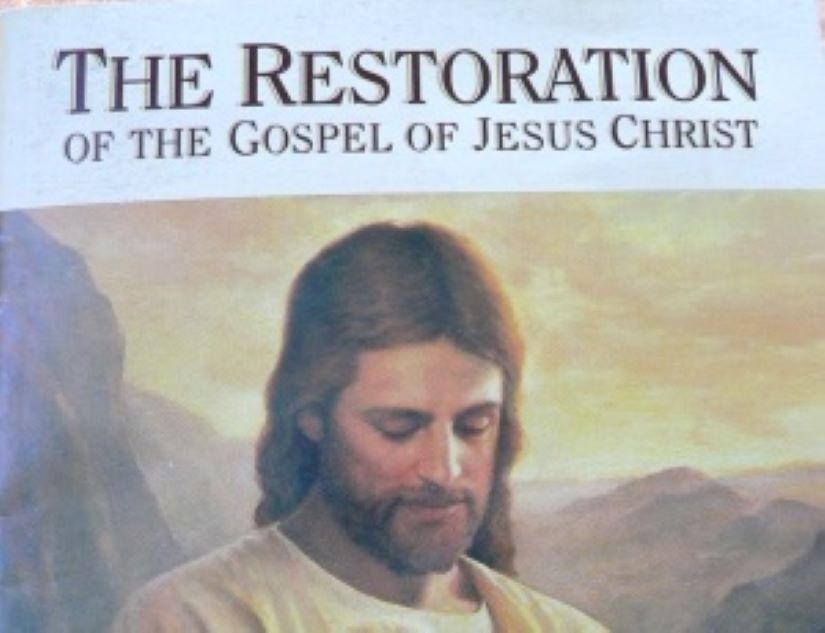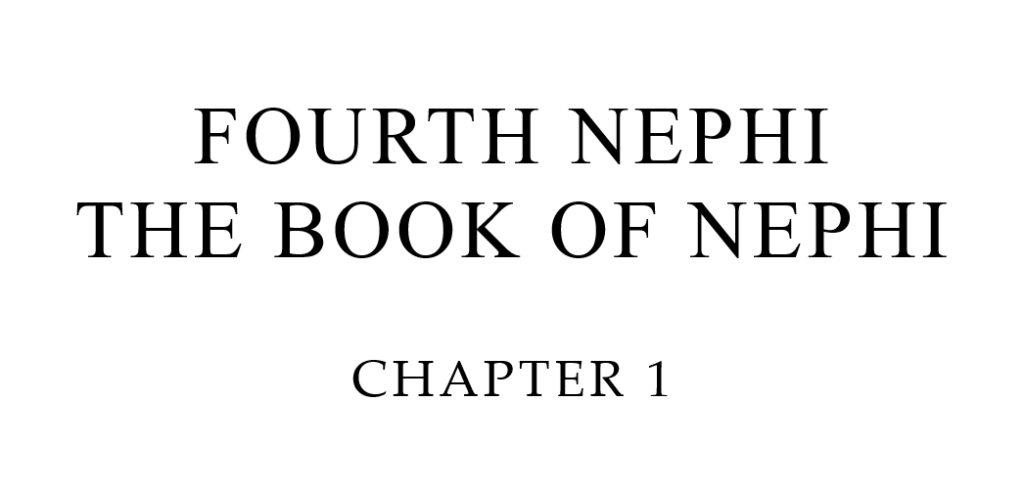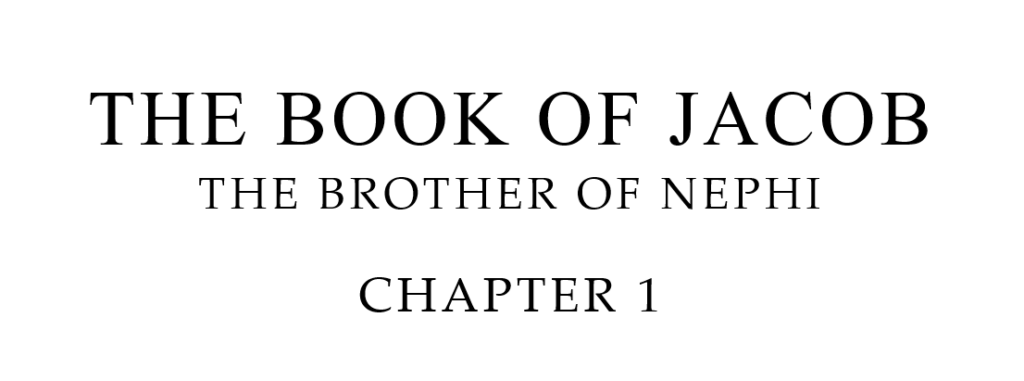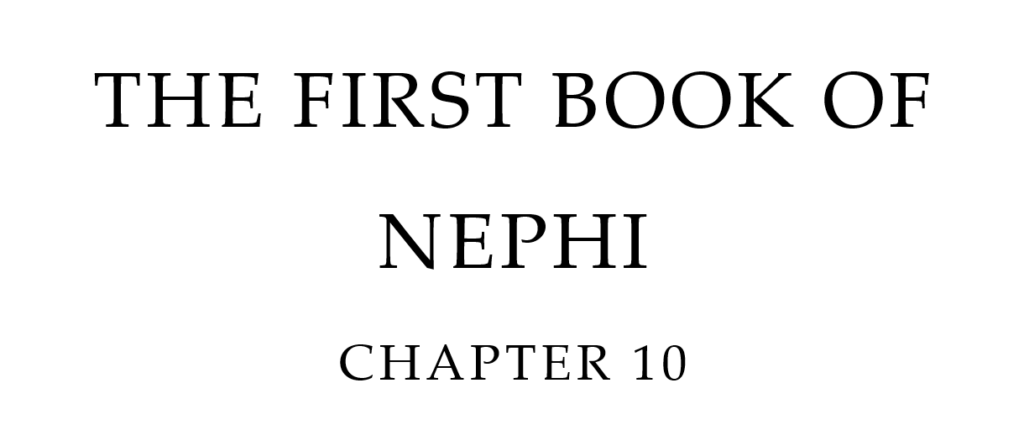
Another Testament of Jesus Christ?
The Church of Jesus Christ of Latter-day Saints describes The Book of Mormon as another testament of Jesus Christ, maintaining that the bible was corrupted, and The Book of Mormon was needed to restore the gospel.
In this study we examine key passages in The Book of Mormon to determine if it really is, another testament of Jesus Christ.
Book of Mormon Storyline:
The Book of Mormon contains a story of a Hebrew family that flees the city of Jerusalem about 600 B.C. The father’s name is Lehi, an alleged descendant of the Bible’s Joseph. Lehi’s son Nephi was his most righteous son. Nephi became the leader over his rebellious brothers. God instructed Lehi and his family to sail across the ocean to the American continent about 589 B.C. After arriving, Nephi and his oldest brother Laman had a conflict and separated. This conflict created two nations, the Nephites and the Lamanites.
The Nephites had God’s favor, they are described as being:
“… white and exceedingly fair and delightsome.” (2 Nephi 5:21)
The Lamanites (American Indians) were supposedly cursed to have black skin and were considered primitive compared to the Nephites. These two nations fought against each other for centuries. The prophet Mormon eventually became the leader of the Nephites.[1]
Fourth Nephi, Another Testament?
The Book of Mormon maintains that every person on the American continent, consisting of both the Nephites and the Lamanites, converted unto the Lord:

The Nephites and the Lamanites are all converted unto the Lord—They have all things in common, work miracles, and prosper in the land—After two centuries, divisions, evils, false churches, and persecutions arise—After three hundred years, both the Nephites and the Lamanites are wicked—Ammaron hides up the sacred records. About A.D. 35–321.
“And it came to pass in the thirty and sixth year, the people were all converted unto the Lord, upon all the face of the land, both Nephites and Lamanites, and there were no contentions and disputations among them, and every man did deal justly one with another.” (4 Nephi 1:2)
On this subject, Orson Pratt, of The Church of Jesus Christ of Latter-day Saints, said:
“For after He [Christ] arose from the dead, and finished his ministry at Jerusalem, and ascended to heaven, he descended in the presence of the Nephites, who were assembled round about their temple in the northern parts of South America. … The Nephites and Lamanites were all converted unto the Lord, both in South and North America: and they dwelt in righteousness above three hundred years; but towards the close of the fourth century of the Christian era, they had so far apostatized from God, that he suffered great judgments to fall upon them. The Lamanites, at that time, dwelt in South America, and the Nephites in North America.” (A INTERESTING ACCOUNT OF SEVERAL REMARKABLE VISIONS… , Pratt 1840, 1st ed. Edinburgh Scotland pp. 20-21)
One might wonder why the gospel of Christ was so much more effective in America, resulting in every person on the American Continent converting to the Lord.
The Record Gets Worse:
The Book of Mormon also records:
“… there was no contention in the land, because of the love of God which did dwell in the hearts of the people. And there were no envying, nor strife, nor tulmults, nor whoredoms, nor lyings, nor murders, nor any manner of lasciviousness; and surely there could not be a happier people among all the people who had been created by the hand of God. There were no robbers, nor murderers, neither were there Lamanites, nor any manner of -ites; but they were in one, the children of Christ, and heirs to the kingdom of God. And how blessed were they! … and there was no contention in all the land.” (4 Nephi 1:15-18)
Imagine two nations, consisting of hundreds of thousands of people, if not millions, living year after year for seventy-four years in a row,[2] without anyone envying what another person had, or lusting after another person’s spouse, or contending with anyone about anything?
This does not come close to representing the Biblical Church in the Middle East, because early on, there are accounts of people lying.[3]
There Were Also Contentions:
The Apostle Paul wrote:
“When Peter came to Antioch, I opposed him to his face, because he was clearly in the wrong.”[4]
and,
“For it hath been declared unto me of you, my brethren, by them which are of the house of Chloe, that there are contentions among you.” (1 Corinthians 1:11, King James Bible)
People living in Paul’s day contended with each other, including Paul himself!
Why is it that in America:
“… there was no contention in the land …” (4 Nephi 1:15)
LDS General Authority and Assistant Church Historian, Brigham Henry Roberts, examined the literary style within the Book of Mormon and concluded:
“The narrative proceeds in characteristic disregard of conditions necessary to its reasonableness, as if it were a tale told by a child, with utter disregard for consistency.” (Studies of the Book of Mormon, Roberts 1985, p. 251)
More Inconsistencies:
Unlike the Bible, the Book of Mormon describes New Testament life in America several hundred years before Jesus Christ instituted the New Covenant:
“Nephi tells why Christ was baptized—Men must follow Christ, be baptized, receive the Holy Ghost, and endure to the end to be saved—Repentance and baptism are the gate to the strait and narrow path—Eternal life comes to those who keep the commandments after baptism. Between 559 and 545 B.C.” (Introduction to 2 Nephi 31)
The Book of Mormon also records that the Gentiles need to be convinced that Jesus is the Christ:
“And as I spake concerning the convincing of the Jews, that Jesus is the very Christ, it must needs be that the Gentiles be convinced also that Jesus is the Christ, the Eternal God.” (2 Nephi, 26:12)
Why is it that holy men in the Book of Mormon understood the gospel would be open to the Gentiles, 577 years before Christ’s apostles did?
Also, the Book of Mormon claims that believers in Christ were called Christians, 72 years[5] before Jesus was born:
“And those who did belong to the church were faithful; yea, all those who were true believers in Christ took upon them, gladly, the name of Christ, or Christians as they were called, because of their belief in Christ who should come.” (Alma 46:15)
In the Bible, believers weren’t called Christians until after the New Testament Church was established:
“… and when he had found him, he brought him to Antioch. And for an entire year they met with the church and taught considerable numbers of people; and the disciples were first called Christians in Antioch. (Acts 11:26 NASB)
Holy Ghost Poured Out Before Pentecost:
The Book of Mormon has believers receiving the Holy Ghost about 578 years before the Holy Ghost was available to the New Testament Church:
“And also, the voice of the Son came unto me, saying: He that is baptized in my name, to him will the Father give the Holy Ghost, like unto me; wherefore, follow me, and do the things which ye have seen me do.
Wherefore, my beloved brethren, I know that if ye shall follow the Son, with full purpose of heart, acting no hypocrisy and no deception before God, but with real intent, repenting of your sins, witnessing unto the Father that ye are willing to take upon you the name of Christ, by baptism—yea, by following your Lord and your Savior down into the water, according to his word, behold, then shall ye receive the Holy Ghost; yea, then cometh the baptism of fire and of the Holy Ghost; and then can ye speak with the tongue of angels, and shout praises unto the Holy One of Israel.” (2 Nephi 31:12-13)
In contrast, the Bible records that Jesus told his disciples:
“For John truly baptized with water: but ye shall be baptized with the Holy Ghost not many days hence.” (Acts 1:5, KJV)
Christ’s disciples did not have the Holy Ghost when he spoke those words. They received the Holy Spirit on the day of Pentecost, when the early Church was formed. Not in 545 B.C. like Book of Mormon peoples supposedly did.
It doesn’t help matters that the Joseph Smith Translation of the Bible reads exactly the same as the King James Version which speaks of the Holy Spirit only being given after Christ’s resurrection:
“Nevertheless I tell you the truth; It is expedient for you that I go away: for if I go not away, the Comforter will not come unto you; but if I depart, I will send him unto you.” (John 16:7)
Another Testament? Spurious Content:
Spurious:
“Not genuine, authentic, or true; not from the claimed, pretended, or proper source; counterfeit.” (Spurious, dictionary.com)
The Book of Mormon has prophets in America teaching men to believe in Christ, teaching about Christ’s kingdom, teaching about Christ’s suffering and death on the cross, and persuading people to come unto Christ, 500 years before Jesus was born:

Jacob and Joseph seek to persuade men to believe in Christ and keep His commandments—Nephi dies—Wickedness prevails among the Nephites. About 544–421 B.C.
“And we also had many revelations, and the spirit of much prophecy; wherefore, we knew of Christ and his kingdom, which should come. Wherefore we labored diligently among our people, that we might persuade them to come unto Christ, and partake of the goodness of God … Wherefore, we would to God that we could persuade all men not to rebel against God, to provoke him to anger, but that all men would believe in Christ, and view his death, and suffer his cross and bear the shame of the world …” (Jacob 1:6-8)
Contrast the Book of Mormon peoples understanding of Christ’s suffering and death with Christ’s own disciples:
“From that time on Jesus began to explain to his disciples that he must go to Jerusalem and suffer many things at the hands of the elders, chief priests and teachers of the law, and that he must be killed and on the third day be raised to life. Peter took him aside and began to rebuke him. ‘Never, Lord!’ he said. ‘This shall never happen to you!’” (Matthew 16:21-22)
Why is it that the history of people from The Book of Mormon, who were living in America, knew all about Jesus Christ’s coming ministry, including his death on the cross, yet the history of people living in Israel did not?
Plagiarism in The Book of Mormon:
“The practice of taking someone else’s work or ideas and passing them off as one’s own.” (Plagiarism, Oxford Dictionary)
Example:

Lehi tells also of the coming of the one who should baptize the Lamb of God—Lehi tells of the death and resurrection of the Messiah … Nephi speaks of the Son of God, of the gift of the Holy Ghost, and of the need for righteousness. About 600–592 B.C.
7 And he spake also concerning a prophet who should come before the Messiah, to prepare the way of the Lord—
8 Yea, even he should go forth and cry in the wilderness: Prepare ye the way of the Lord, and make his paths straight; for there standeth one among you whom ye know not; and he is mightier than I, whose shoe’s latchet I am not worthy to unloose. And much spake my father concerning this thing. (1 Nephi 10:7-8)
Compare to:
“As it is written in the book of the words of Esaias the prophet, saying, The voice of one crying in the wilderness, Prepare ye the way of the Lord, make his paths straight. (Luke 3:4, King James Bible)
And:
“He it is, who coming after me is preferred before me, whose shoe’s latchet I am not worthy to unloose.” (John 1:27, King James Bible)
The King James Version of the Bible was published over 200 years before the Book of Mormon. Joseph Smith had access to the King James Version during the time the Book of Mormon was supposedly translated. It certainly would have been possible for Smith and his associates to reproduce portions of the Book of Mormon storyline from the KJV. That would explain why the supposed[6] Book of Mormon peoples knew so much more about Christ’s ministry than people from the Bible.
LDS Brigham Young University professor, Daniel C. Peterson, said:
“… if the Book of Mormon were false, little or nothing that is distinctive to our faith would stand. Joseph Smith’s prophetic mission and all of the other revelations that came through him would be called into question.” (The Keystone of Our Religion, Daniel C. Peterson)
More Issues to Consider:
○ Misleading Statement from LDS.org
○ The Trouble with Lucy Harris
Other Articles of Interest:
■ LDS Lesson 1 — Rich Kelsey
■ LDS Lesson 2 — Rich Kelsey
■ Book of Mormon Final Battles — Rich Kelsey
■ Book of Mormon Archeological Evidence? — Rich Kelsey
Full Article Index / LDS SERIES
Endnotes:
[1] 1 Nephi 1 (churchofjesuschrist.org)
[2] “And it came to pass in the thirty and sixth year, the people were all converted unto the Lord, upon all the face of the land, both Nephites and Lamanites, and there were no contentions and disputations among them, and every man did deal justly one with another. And how blessed were they! For the Lord did bless them in all their doings; yea, even they were blessed and prospered until an hundred and ten years had passed away; and the first generation from Christ had passed away, and there was no contention in all the land.” (Book of Mormon, 4 Nephi 1:2 and 18)
[3] “Then Peter said, “Ananias, how is it that Satan has so filled your heart that you have lied to the Holy Spirit and have kept for yourself some of the money you received for the land?” (Acts, 5:3, NIV)
[4] “When Peter came to Antioch, I opposed him to his face, because he was clearly in the wrong. Before certain men came from James, he used to eat with the Gentiles. But when they arrived, he began to draw back and separate himself from the Gentiles because he was afraid of those who belonged to the circumcision group. The other Jews joined him in his hypocrisy, so that by their hypocrisy even Barnabas was led astray.” (Galatians 2:11-13, NIV)
[5] “Amalickiah conspires to be king—Moroni raises the title of liberty—He rallies the people to defend their religion—True believers are called Christians—A remnant of Joseph shall be preserved—Amalickiah and the dissenters flee to the land of Nephi—Those who will not support the cause of freedom are put to death. Between 73 and 72 B.C.” (Introduction to Alma 46)
[6] “… the terminologies [of the Book of Mormon] and the language used and the methods of explaining and putting things down are 19th century literary concepts and cultural experiences one would expect Joseph Smith and his colleagues would experience.” (Book of Mormon Archeology, Sunstone Symposium, August 25, 1984, Dr. Ray T. Matheny, professor of Anthropology at BYU, typed copy transcribed from a tape-recording, pp. 30-31)
and,
“If, after a rigid examination, it [The Book of Mormon] be found an imposition, it should be extensively published to the world as such; the evidences and arguments on which the imposture was detected, should be clearly and logically stated, that those who have been sincerely yet unfortunately deceived, may perceive the nature of the deception, and be reclaimed, and that those who continue to publish the delusion, may be exposed and silenced, not by physical force, neither by persecutions, bare assertions, nor ridicule, but by strong and powerful arguments—by evidences adduced from scripture and reason.” (LDS Apostle, Orson Pratt, Divine Authenticity of the Book of Mormon, p. 1)